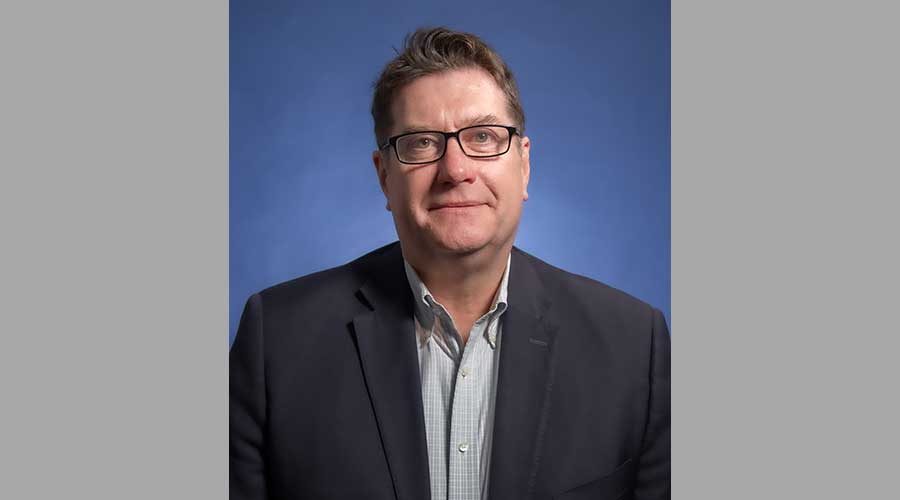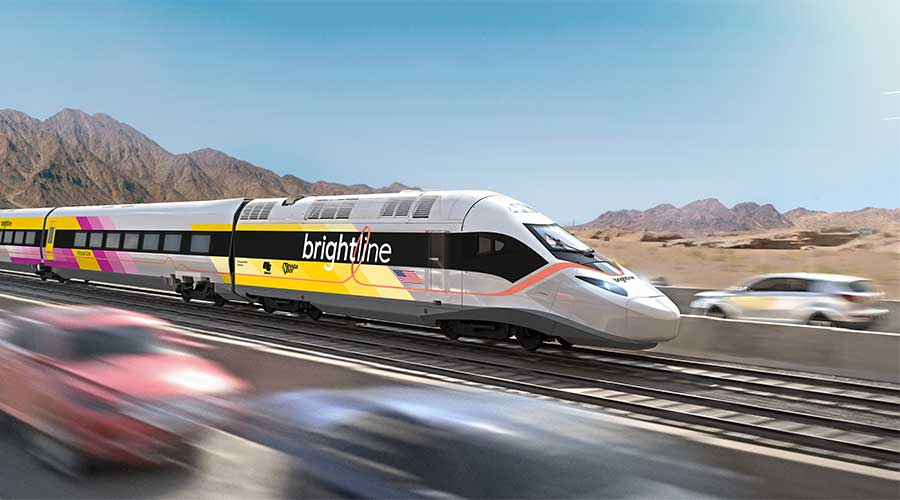Stay updated on news, articles and information for the rail industry
January 2013
Rail News: Passenger Rail
TriMet's Portland-Milwaukie project will add vital link to southeast destinations
by Angela Cotey, Associate Editor
Portland, Ore., is a city known for its diverse culture. Art and entertainment venues, health and education institutions, industrial areas, urban housing developments and historic suburbs, as well as a range of green initiatives, make the city appealing for residents and visitors alike.
An extensive public transit network helps connect it all. During the past 25 years, the Tri-County Metropolitan Transportation District of Oregon (TriMet) has built a series of light-rail lines serving the Portland area, as well as a suburb-to-suburb commuter-rail corridor.
Now, TriMet is in the midst of building its sixth light-rail corridor, a 7.3-mile line extending from the terminus of the MAX (or Metropolitan Area Express) Green and Yellow lines in downtown Portland to Milwaukie and north Clackamas County. When it opens in 2015, the corridor will link a range of key employment, housing and entertainment destinations.
"This line will really connect quite a patchwork of different types of neighborhoods," says Dan Blocher, TriMet's director of capital projects. "We anticipate this corridor will have the highest level of opening-day ridership of all our lines."
Initially, light rail wasn't even considered an option for the area, which was part of the so-called North/South Corridor. More than 20 years ago, local transportation leaders envisioned a corridor running from Vancouver, Wash., to central Portland and then south to Milwaukie. That proposal was later split into more manageable pieces, including TriMet's Yellow Line, which now connects central and northern Portland, and the Green Line, now running along the eastern portion of the city connecting to Clackamas Town Center.
An Evolving Idea
For the project's southern portion, officials at TriMet, regional government agency Metro, and the cities of Portland and Milwaukie considered bus rapid transit, river transit and high-occupancy vehicle lanes as potential transportation-improvement options.
But area community leaders requested that light rail be included in the study phase. In 2003, agency officials identified the mode as the preferred option after community feedback indicated strong support for the service.
Now under construction since mid-2011, the Portland-Milwaukie segment will be known as the Orange Line when it's completed. The Federal Transit Administration is fronting about half of the project's $1.5 billion price tag through a Full Funding Grant Agreement; state, local and regional funds will cover the remainder. TriMet is purchasing 18 S70 light-rail vehicles from Siemens to operate on the line.
The 10-station corridor will pick up where the Green Line, which opened in 2009, left off. The line will originate at Portland State University (PSU), then travel southeast to a section of town called the South Waterfront, which has been under development for the past five years or so, says Blocher. The South Waterfront now features a series of high-rise apartments, as well as an extension of the Oregon Health & Science University (OHSU) campus; OHSU is the region's largest employer.
From there, the line will cross the Willamette River and enter a light industrial area before traveling to the Oregon Museum of Science and Industry (OMSI), a major tourist destination, according to Blocher. The line then will travel through the suburban community of Milwaukie before terminating a bit further south in north Clackamas County.
Delving Into Development
TriMet officials anticipate the line will serve about 20,000 riders daily in its opening year and 25,000 passengers a day by 2030. Area businesses are hoping to capture much of that customer base — and also do their part to help ensure ridership exceeds expectations.
For example, OHSU is constructing a new facility adjacent to the future light-rail station. The building will house OHSU's schools of dentistry and medicine, OHSU and Oregon State University's joint pharmacy program, and PSU's undergraduate biology and chemistry departments. The light-rail service will provide employees and patients easier access to the medical center and university, and connect the PSU and OHSU campuses, so students can shuttle quickly between classes.
And near OMSI, the city of Portland is tweaking the street grid to support future development, says Blocher.
TriMet, which long has strongly emphasized transit-oriented development, is reviewing other development options. The agency already has received a development proposal for a narrow piece of property adjacent to the future Clinton Station, and also plans to seek development bids for a remnant property created after a building was torn down to make room for the light-rail alignment, Blocher says.
As of mid-December, construction on the corridor was 32 percent complete. The construction process hasn't been — and won't continue to be — without its challenges.
Construction kicked off in July 2011, when crews began prep work for bridge piers to be installed in the Willamette River. Some utility work was done in conjunction with it. Crews were under a strict timeline for the river work; the Oregon Department of Fish and Wildlife will allow piers to be built only between July 1 and Oct. 31 during any given year to avoid disrupting migratory fish.
As for the bridge itself: The 1,720-foot, cable-stayed structure will accommodate light-rail trains, buses, bicyclists, pedestrians and streetcars crossing the river. Private vehicles will not be allowed to operate over the structure. TriMet officials worked closely with community and business leaders from either bank of the river to determine the appearance and design for the bridge.
Designing a structure that will accommodate river traffic as well as an Americans with Disabilities Act (ADA)- accessible pedestrian and bicycle path was no easy feat. ADA requirements set a maximum grade that a walkway can be, while the barge and other boat traffic requires a higher bridge — and TriMet officials had to prove the bridge could accommodate that traffic before obtaining a U.S. Coast Guard permit to build the structure.
Meanwhile, TriMet had restrictions on how high it could raise the ends of the bridge, with OHSU and OMSI developments on the west and east ends of the river, respectively.
"It's sort of a confluence of a number of factors that led to the particular shape and type of bridge," says Blocher. "We had to go with the maximum slope possible to meet the ADA requirements and also provide enough clearance over the waterfront for commercial river traffic."
Train and traffic signal integration on the bridge and either side of it will be critical, too. Trains and buses will share about 1.5 miles of the transitway, which will help reduce bus traffic on the other highway bridges over the river. The new Willamette River bridge also will "close the loop" on Portland's streetcar system, which now runs parallel to the river on the west side, through the Pearl District and across a different bridge, then runs on the east side of the river past the Oregon Convention Center to OMSI.
"It's a lot of coordination. The bridge structure and portals where buses can cut outside of traffic and get onto the transit way with the streetcars and trains — everything has to work together technically, electrically and signal-wise," says Blocher. "It will be quite a ballet we'll have there when it's all said and done."
Class I Cooperation
TriMet officials are choreographing a ballet of another sort on the east side of the river, where the Portland-Milwaukie alignment runs into freight railroad territory. Over the bridge, near OMSI, the light-rail line will run adjacent to a Union Pacific Railroad mainline for three miles. It also will run parallel with the Portland & Western Railroad and cross over Oregon Pacific Railroad Co. tracks at grade.
TriMet purchased 2.4 miles of track from UP for $9.5 million. The agency and Class I worked together to determine mutually beneficial projects, including improvements to UP's busy Brooklyn Yard. For example, the Class I and TriMet will grade separate a section of track where intermodal trucks enter and exit the yard, which will eliminate some of the traffic crossing the light-rail alignment at grade.
"That intermodal facility really is the heartbeat of UP's local operations, so obviously they had a very high level of interest in ... helping to make it all come together," says Blocher.
In many ways, TriMet serves as the heartbeat of Portland, providing transit options that have helped make the city one of the easiest to get around in the United States. When TriMet ventures farther south come 2015, it will offer yet another relevant transit option for the Portland community.
"With the way land use is arranged and growth patterns are forming, this is a growing corridor," says Blocher. "It's projected that by 2030, there will be 50,000 more households and 100,000 more employees than in 2005."
Keywords
Browse articles on TriMet Portland Oregon Portland-Milwaukie light rail MAX light rail Orange Line North/South CorridorContact Progressive Railroading editorial staff.


 LRW Honors Amtrak’s Acheson As Railway Woman Of The Year
LRW Honors Amtrak’s Acheson As Railway Woman Of The Year
 From Editor-In-Chief Foran: Of Gender Equity And Inclusion
From Editor-In-Chief Foran: Of Gender Equity And Inclusion
 Spotlight On Some Of Today’s Rail Safety Products
Spotlight On Some Of Today’s Rail Safety Products
 Women of Influence in Rail eBook
Women of Influence in Rail eBook
 railPrime
railPrime








